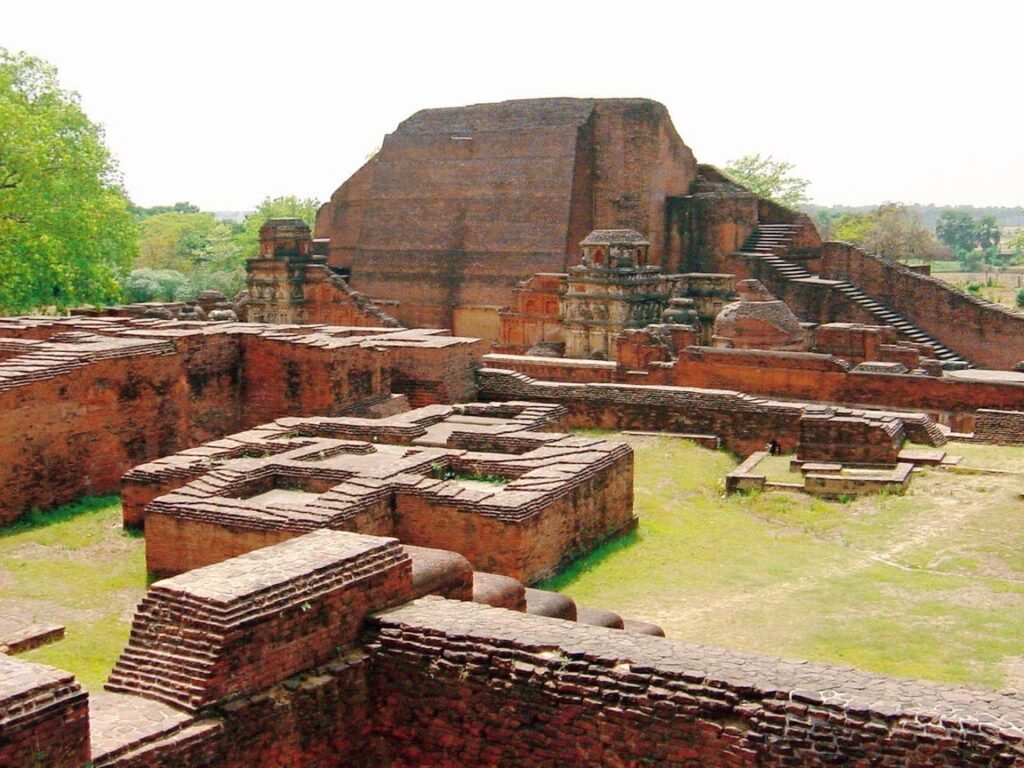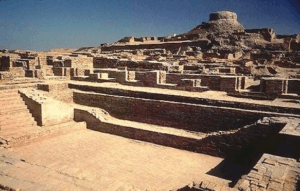
Nestled in the historical state of Bihar, India, Nalanda University stands as a testament to the rich educational and cultural heritage of ancient India. Founded in the 5th century CE, this revered institution attracted scholars from across the globe and became a beacon of knowledge, especially in the realms of Buddhism, philosophy, and sciences.
The Founding and Growth of Nalanda University
The Genesis of Nalanda University:
Nalanda University, traditionally attributed to the Gupta emperor Kumaragupta I, came into existence in the 5th century CE. Located near modern-day Patna, the university quickly grew into an architectural marvel, featuring stupas, shrines, viharas (residential and educational buildings), and extensive libraries. The curriculum was vast, encompassing subjects like Buddhism, the Vedas, logic, grammar, medicine, mathematics, and astronomy.
Golden Age of Nalanda University:
During its peak, Nalanda University flourished under the patronage of various Indian dynasties, including the Guptas, Harshavardhana, and the Pala dynasty. It housed over 10,000 students and 2,000 teachers, drawing scholars from China, Korea, Japan, Tibet, Mongolia, Turkey, Sri Lanka, and Southeast Asia. This diverse student body and faculty created a vibrant intellectual environment that was unmatched in the ancient world.
Eminent Scholars and Teachers at Nalanda University
Nalanda University’s history is adorned with the contributions of several illustrious figures:
- Aryabhata: The renowned mathematician and astronomer is believed to have studied at Nalanda University.
- Nagarjuna: An influential Buddhist philosopher who developed the Madhyamaka school of Mahayana Buddhism.
- Xuanzang (Hsuan Tsang): The Chinese pilgrim who studied and taught at Nalanda University in the 7th century. His detailed accounts provide invaluable insights into the university’s structure and daily life.
- Dharmapala: A prominent Buddhist scholar and monk who served as the head of Nalanda University.
Historical Mentions and Documentation of Nalanda University
Nalanda University’s grandeur and scholarly achievements are well-documented in various historical texts:
- Xuanzang’s Records: Xuanzang’s travel accounts, “Great Tang Records on the Western Regions,” offer a comprehensive description of Nalanda University’s curriculum, infrastructure, and scholarly life.
- Yijing (I-Tsing): Another Chinese pilgrim, Yijing, spent over ten years at Nalanda University and chronicled his experiences in his travelogue “A Record of Buddhist Practices Sent Home from the Southern Sea.”
- Taranatha’s History of Buddhism in India: The Tibetan scholar Taranatha’s works include references to Nalanda University and its eminent scholars.
- Arabic and Persian Accounts: Scholars like Al-Biruni and others mentioned Nalanda University in their works, highlighting its significance in the broader context of global education.
The Tragic Decline and Destruction of Nalanda University
Nalanda University’s decline began in the 12th century, culminating in its destruction in 1193 by the Turkish Muslim invader Bakhtiyar Khilji. The libraries were set ablaze, and thousands of monks were killed, marking a devastating blow to Indian and Buddhist education.
Reviving the Legacy of Nalanda University
In recent years, efforts have been made to revive Nalanda University as a center of learning. Established in 2010 near the ancient site, the new Nalanda University aims to rekindle the spirit of the ancient institution, focusing on interdisciplinary and international education.
Nalanda University’s Enduring Legacy
Nalanda University remains a symbol of the rich educational and cultural heritage of ancient India. It is celebrated for its scholarly achievements and contributions to global knowledge. Through its history, Nalanda University exemplifies the enduring human quest for knowledge and the timeless value of education.
As we reflect on Nalanda University’s illustrious past, we are reminded of the profound impact that centers of learning can have on the world. The revival of Nalanda University serves as a bridge between the glorious past and a promising future, inspiring generations to come.







